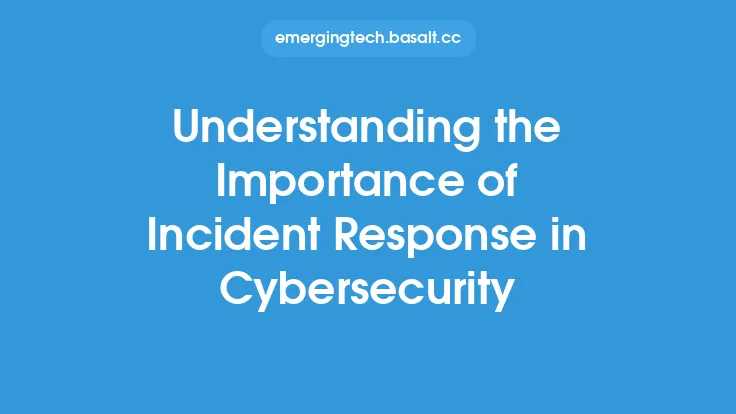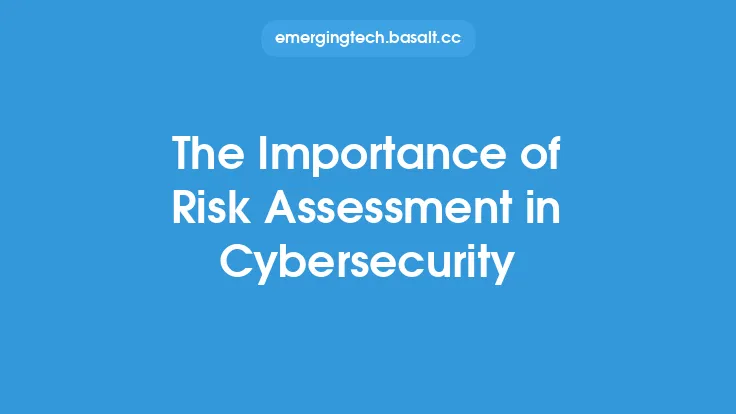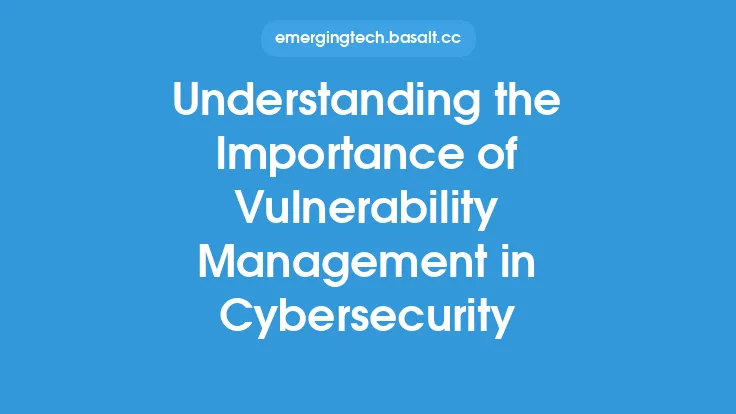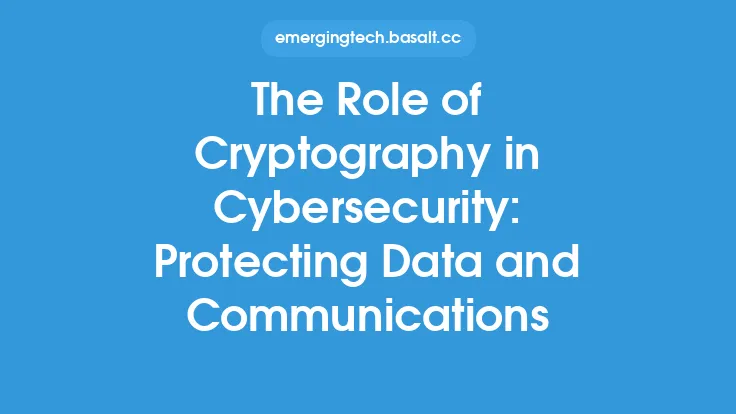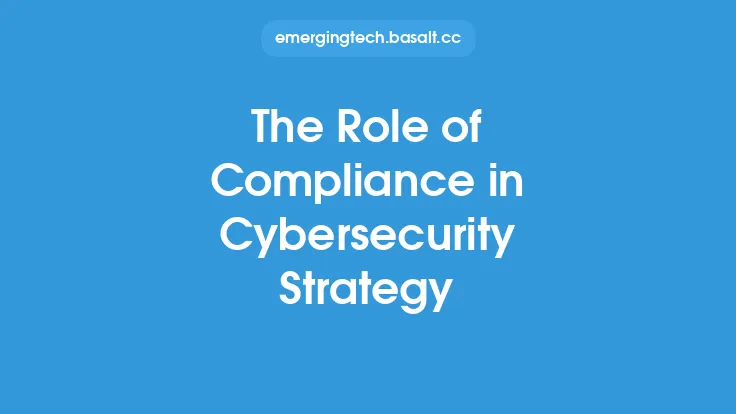In today's digital landscape, cybersecurity is a top priority for individuals and organizations alike. With the increasing number of cyber threats and attacks, it's essential to have a robust security system in place to protect against these threats. One critical component of cybersecurity is endpoint protection, which refers to the practice of securing and protecting endpoint devices such as laptops, desktops, mobile devices, and servers from cyber threats. Endpoint protection is crucial because endpoint devices are the most vulnerable points of entry for cyber attackers, and a breach can have severe consequences, including data loss, financial loss, and reputational damage.
What is Endpoint Protection?
Endpoint protection involves a combination of technologies and techniques to prevent, detect, and respond to cyber threats on endpoint devices. This includes anti-virus software, anti-malware software, firewalls, intrusion detection and prevention systems, and encryption technologies. Endpoint protection also involves implementing security policies and procedures, such as password management, patch management, and vulnerability management, to prevent cyber threats from exploiting vulnerabilities on endpoint devices. Additionally, endpoint protection involves monitoring and analyzing endpoint device activity to detect and respond to potential security incidents.
Types of Endpoint Protection
There are several types of endpoint protection, including:
- Anti-virus software: This type of software is designed to detect and remove malware, including viruses, Trojans, and spyware, from endpoint devices.
- Anti-malware software: This type of software is designed to detect and remove advanced malware, including ransomware, rootkits, and bootkits, from endpoint devices.
- Firewalls: Firewalls are network security systems that monitor and control incoming and outgoing network traffic based on predetermined security rules.
- Intrusion detection and prevention systems: These systems monitor network traffic for signs of unauthorized access or malicious activity and can block or alert on potential security incidents.
- Encryption technologies: Encryption technologies, such as full-disk encryption, protect data on endpoint devices by converting it into an unreadable format that can only be accessed with the correct decryption key.
Benefits of Endpoint Protection
The benefits of endpoint protection are numerous and include:
- Protection against cyber threats: Endpoint protection helps to prevent cyber threats, including malware, ransomware, and phishing attacks, from compromising endpoint devices.
- Data protection: Endpoint protection helps to protect sensitive data on endpoint devices, including financial information, personal identifiable information, and intellectual property.
- Compliance: Endpoint protection helps organizations to comply with regulatory requirements and industry standards, such as PCI-DSS, HIPAA, and GDPR.
- Reduced downtime: Endpoint protection helps to reduce downtime and minimize the impact of a security incident on business operations.
- Improved incident response: Endpoint protection helps organizations to detect and respond to security incidents quickly and effectively, reducing the risk of data loss and reputational damage.
Challenges of Endpoint Protection
Despite the importance of endpoint protection, there are several challenges that organizations face, including:
- Complexity: Endpoint protection can be complex, requiring significant resources and expertise to implement and manage.
- Cost: Endpoint protection can be costly, requiring significant investment in software, hardware, and personnel.
- Evolving threats: Cyber threats are constantly evolving, requiring endpoint protection solutions to be continually updated and improved to stay effective.
- User behavior: User behavior, such as clicking on phishing emails or using weak passwords, can compromise endpoint protection and increase the risk of a security incident.
- Mobile devices: Mobile devices, such as laptops and smartphones, can be difficult to secure, particularly when they are used outside of the organization's network.
Best Practices for Endpoint Protection
To overcome the challenges of endpoint protection, organizations should follow best practices, including:
- Implementing a layered security approach: This involves using multiple security technologies and techniques to protect endpoint devices.
- Keeping software up-to-date: This includes ensuring that operating systems, applications, and security software are patched and updated regularly.
- Using strong passwords: This includes using complex passwords and multi-factor authentication to prevent unauthorized access to endpoint devices.
- Educating users: This includes educating users on cybersecurity best practices, such as avoiding phishing emails and using secure networks.
- Monitoring and analyzing endpoint device activity: This includes using security information and event management (SIEM) systems to monitor and analyze endpoint device activity and detect potential security incidents.
Future of Endpoint Protection
The future of endpoint protection is likely to involve the use of advanced technologies, such as artificial intelligence (AI) and machine learning (ML), to detect and respond to cyber threats. Additionally, the use of cloud-based endpoint protection solutions is likely to increase, providing organizations with greater flexibility and scalability. Furthermore, the use of Internet of Things (IoT) devices is likely to increase, requiring organizations to implement endpoint protection solutions that can secure these devices. Overall, the importance of endpoint protection will only continue to grow as cyber threats evolve and become more sophisticated.
